
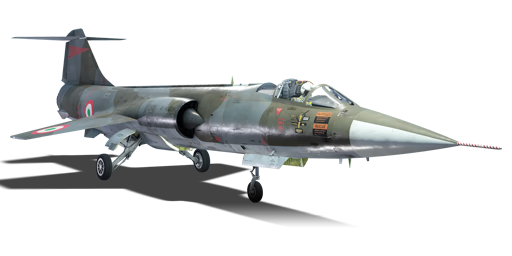


The F-104S would be one of the most capable Starfighter variants ever built. The F-104S would receive Sparrow missiles, the NASARR R-21G/H radar, more hardpoints, and other airframe improvements. It was essentially an evolution in the F-104G. Fiat would take charge of producing the new Starfighter variant with the help of Alfa Romeo and Selenia. The first F-104S would take flight in late 1968, and Fiat would build over 200 F-104S Starfighters by 1979. Around 40 F-104S aircraft were exported to Turkey which continued using them until the mid-1990s. This would also mark the end of the Starfighter's production run as more advanced planes replaced it.
Introduced in Update "Starfighters", the F-104S is an Italian supersonic interceptor based on the American Lockheed F-104 "Starfighter" series. The external appearance is much the same besides the additional ventral fins, but as the final variant of the Starfighter family, it boasts the best speed and payload capacity of any F-104. It can be used as a high-speed ground attacker with a sizeable load of assorted bombs and rockets. Alternatively, it can be a deadly interceptor if equipped with air-to-air missiles. Unique among Starfighters is its ability to carry a pair of AIM-7E Sparrow semi-active radar homing missiles, the same variant used by the F-4E Phantom II. However, players should take note that equipping Sparrow missiles requires the removal of the M61 Vulcan.
flaps
flaps
flaps
brake
| Name | Weight | Slot | ||||||||||
|---|---|---|---|---|---|---|---|---|---|---|---|---|
| 72.6 kg |  |  |  |  |  |  | ||||||
| 76.9 kg |  |  |  |  |  |  | ||||||
| 205 kg | 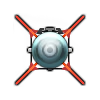 |  | ||||||||||
| 19 × | 233.8 kg |  |  |  |  | |||||||
| 4 × | 328.3 kg |  |  | |||||||||
| 117.9 kg |  |  |  |  |  |  | ||||||
| 240.9 kg |  |  |  |  |  |  |  | |||||
| 254 kg |  |  |  |  |  |  |  | |||||
| 362.4 kg |  |  |  |  |  |  |  | |||||
| 401.4 kg |  |  |  |  |  |  |  | |||||
| 446.8 kg | 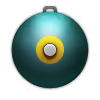 |  |  | |||||||||
| 304.7 kg | 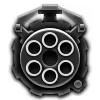 | |||||||||||
| 893.6 kg | 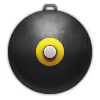 | |||||||||||












Flight performance |
|---|
Survivability | |
|---|---|
Weaponry | |||
|---|---|---|---|